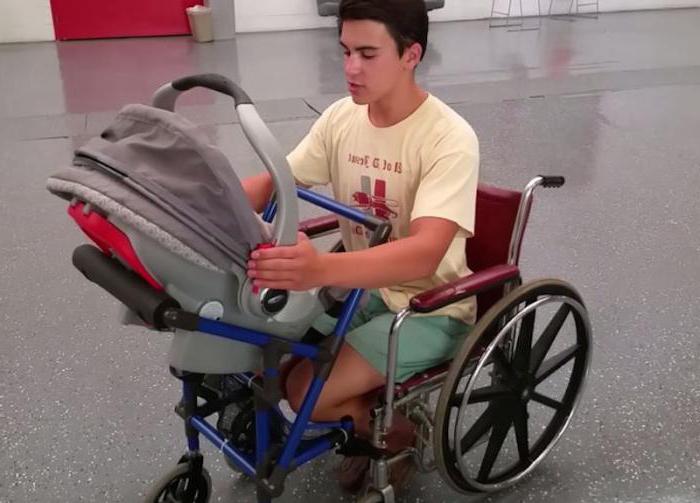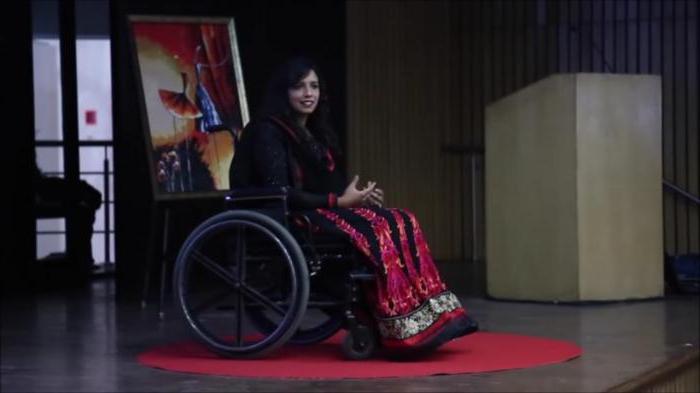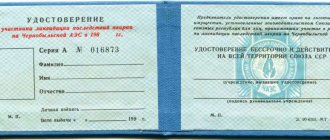The state has created an entire system of assistance for the social protection of those individuals who have persistent health problems, injuries, cannot work, and have limited opportunities for socialization. Its goal is to reduce the distance between a sick person and society. It consists of several components:
- establishing the fact of disability;
- determining the level of disability;
- solutions to ways of socialization of a disabled person;
- determining possible social government support;
- comprehensive social support.
ITU - what is it
To resolve some of these issues in relation to each specific person requiring state support, a medical and social examination (MSE) was created. Strictly speaking, ITU is a state examination designed to resolve the issue of establishing disability for a specific person.
Among the main tasks of carrying out MSA is determining the degree of damage to the basic functions of the body of a particular person, identifying possible ways of rehabilitation, and legal recognition of him as disabled.
Carrying out the MES and VTEC procedures
Medical and social examination of disability is carried out according to the scheme.
A citizen must go through the following stages:
- Contact your doctor and get a referral to participate in the procedure. Then you have to prepare the necessary documentation.
- A commission is being held. Medical specialists take part in it. Doctors from different fields are involved in the procedure. Representatives of the commission carefully study the documents that confirm the patient’s condition. Doctors have the right to examine the patient during the examination. A citizen may be asked additional questions regarding work, health and living conditions. All information is reflected in the medical examination protocol.
- Voting is in progress. Based on this, the general decision of VTEK is made. A citizen will be able to find out about it right on the day of the procedure.
If a consensus cannot be reached, the patient may be referred for re-examination. The procedure is fixed at the legislative level. It is recorded in Chapter 4 of PP No. 95 dated February 20, 2006.
Video
ITU structure
For each specific person who needs to establish a disability, the examination is carried out at the ITU office at the place of residence. They are branches of the Main Bureaus located in the regions.
There are city and district branches of the Main Bureaus, where you should come with a referral and documents. A disabled person can apply to the ITU at his place of residence (this may be his place of residence) or at his location (if he has left the Russian Federation). For example, to conduct ITU in Moscow, you should contact one of the 95 branches of the “GB ITU in Moscow” (their addresses are posted on the official website of the Head Office).
In case of disagreement with the decision of the local branch, the person (or his guardian) can appeal it to the Head Office, as a rule, these are regional structures. Then the examination will be carried out here (in our example, this will be the ITU GB for Moscow).
The main structure is the Federal Bureau of ITU. In difficult situations, in case of disagreement with the decision of the Head Body, the examination is carried out here; its decision can be appealed in court.
The Federal Bureau of Medical and Social Expertise is subordinate to the Ministry of Labor of the Russian Federation.

Organizational structure of the ITU system in Russia
- The ITU Bureau of a city and regional scale is opened based on the need to conduct 1800-2000 surveys per year with a population of a city or region of about 70,000 - 90,000 people. Their functions are described in detail above.
- The main ITU bureau for each subject of the Russian Federation is responsible for coordinating its departments, appealing decisions made by lower authorities, conducting repeated surveys on its own initiative to clarify or change the decision, and maintaining statistics in the allocated territory.
- The main bureau of the ITU of the federal medical and biological agency, which is responsible for conducting examinations of workers in a certain industry category, as well as when living and working in areas with hazardous working conditions.
- ITU Federal Bureau - exercises general control over all ITU divisions in the Russian Federation, including the Main Bureaus, conducts repeated examinations when appealing decisions made by lower authorities, or on its own initiative, conducts examinations in complex cases or cases that require additional consultations with specialists or technically complex examinations, conduct complex diagnostics using the latest technologies, initiate orders for scientific research and design work for the Federal Medical and Biological Agency, conduct statistical studies of disability issues, develop and implement rehabilitation and correctional programs for people with disabilities, and provide education and training for conducting MSE.
Tasks and powers
One of the main functions of the ITU is to establish a disability group. This procedure is a factual overall assessment of the health status of the person contacting the bureau.
To conduct examinations of persons with various diseases, special expert groups have been created:
- mixed-profile groups will examine patients with general diseases;
- Special groups are created to consider issues related to persons aged 18–1 years.
Specialized groups have also been created for examination:
- patients with tuberculosis;
- persons with mental disorders;
- suffering from visual impairment.
The examination will be carried out by an expert group depending on the disease that the patient has.
When passing the ITU, the issue of rehabilitation is also resolved and an individual rehabilitation program (IRP) is issued (or adjusted).
About disability groups and criteria for their establishment
The ITU examination involves determining the disability group (its extension) or refusing to establish it. There are 3 disability groups of all types, and there is also a “disabled child” category. The ITU Bureau can set disability for 1 or 2 years, 5 years or for life (this is determined by the relevant criteria of the Rules).
The group specification contains a detailed list of health disorders of the person being examined. These criteria form the basis for establishing the disability group by the examination.
For example, when persistent moderate impairments lead to a decrease in the ability to perform previously familiar professional duties or to a decrease in the volume or intensity of work, and also cause the inability to continue activities in the main profession, but at the same time the person remains able to perform duties of a lower qualification under standard conditions. This indicates the presence of 1st degree limitation of the main categories of life activity, and there are grounds for assigning a III disability group.
If persistently expressed disorders of body functions arise, requiring special devices or the creation of specific working conditions or any special technical equipment to perform work activities. funds or assistance from outsiders, they qualify as the second degree of restriction. In this case, disability group II is assigned.
When persistently expressed health disorders are detected, leading to the impossibility (even contraindication) of work or absolute inability to do it, grade 3 occurs. These are signs of disability group I.
A separate category of “disabled child” is established if a person aged 1 to 18 years has signs of any degree of limitation in the main categories of life activity.
The assignment of the group depends on the general health of the person undergoing the examination. Here, many factors are taken into account that limit the main categories of life. Among them will be his ability to self-care, orientation, communication, movement, ability to control himself and learning ability (which is very important for children and young people).
When all these factors are taken into account, the group will be established. The criteria themselves are approved specifically for each group and have uniform, very clear recommendations for all ITU branches of Russia.

About the possible purposes of the examination
In addition to the main goal - maximum adaptation of a disabled person into society - carrying out MSE also pursues more specific goals. These include:
- determination of a person’s disability group (category “disabled child”);
- establishing the degree of loss of professional skills and ability to work;
- development (or its correction) of an individual rehabilitation program;
- development (or its correction) of a rehabilitation program for the victim.
The commission may also be held to establish:
- stages of loss of professional skills from an occupational disease or industrial accident;
- the need for outside care of a close relative, a citizen undergoing military service;
- signs of persistent health disorder for employees of internal affairs bodies and other structures.

How to get directions
To undergo the examination, you need to receive a referral (to the patient himself or his guardian). This can be done in the following ways:
- Contact a Russian healthcare facility where the person requiring examination is being observed or undergoing treatment.
- Apply to the Pension Fund office. Here you will need to submit the necessary medical documents certifying your illness, injury or disability.
- Apply to the social protection authorities, and there must be signs of a person’s disability and his need for social protection.
The medical institution issues a referral in form No. 088/u-06. In which there will be information about the state of health of the person referred and the recovery capabilities of his health, about the rehabilitation measures taken, their results, and necessarily the purpose for which the person is sent to MSE (disability and group are not indicated in it).
Social protection authorities and the Pension Fund of the Russian Federation issue a referral in a form approved by order of the Ministry of Health and Social Development of the Russian Federation dated December 25, 2006 No. 874, which contains information about signs of disability (usually based on a fact established by them) and the need for social protection, the purpose of the referral.
If a person has been denied a referral by all of the listed institutions, he has the right to appeal directly to ITU branches.

Who determines disability?
What does it look like and where to get a disability certificate? Who determines disability? It is established by the Bureau of Medical and Social Expertise. The purpose of the examination is to establish the complex state of the body, which includes the analysis of social, clinical, functional, psychological and professional-labor data.
You can see a sample of filling out a disability certificate.
And here is the ITU certificate of disability itself (certificate of medical and social examination).
We also provide you with a VTEC certificate of disability.
The ITU Bureau should be divided into three levels:
- regional and city ITUs. This is where most of the examinations take place;
- main bureau of ITU of the constituent entities of the Russian Federation. This bureau stands above the district and city ITUs and controls their work, and it also considers the complaint;
- Federal Bureau of ITU. It controls the main ITU offices. The Bureau considers complaints about the work of lower authorities and conducts re-examination.
What other documents are needed for examination?
Documents are attached to the received referral. Their list will depend on the purpose for which the referral is issued. And you can get it along with the direction.
Common to all types of examination will be:
- a written application for an examination from the person who requires it;
- Identity document of the disabled person and his guardian (if available). For children under 14 years of age, documents of one of the parents are required;
- medical certificate confirming health problems.
Most likely, you will also need the following documents:
- Medical outpatient record, examination protocols (ultrasound, MRI, CT) and x-ray images, hospital extracts (any medical documentation from healthcare institutions in the Russian Federation confirming health problems).
- A copy of the work book (certified by the HR department) or the original (for non-employees).
- Education documents (if available).
- Production characteristics for ITU (has an approved sample), this indicates working conditions, the length of the working day and the nature of the work performed, how the person copes with his duties.
- For children and students, pedagogical characteristics (drawn up in the usual form).
- For persons re-passing the ITU, this is a certificate of disability (original).
- YPRES.

Algorithm for performing the examination
Having found out what VTEC and ITU are, it is recommended that you familiarize yourself in detail with how the disability commission proceeds. First of all, you will need to obtain a referral for examination. The document is taken from the therapist. The paper is issued based on the data recorded in the patient’s outpatient record. Paragraph 20 of the Rules for recognizing citizens as disabled states that individuals have the opportunity to receive a referral not only at the place of registration or residence, but also at their temporary location.
To apply for an examination, you will need to prepare a package of documents:
- passport or other identification document;
- referral to undergo VTEK;
- statement;
- originals and copies of extracts from medical institutions;
- a copy of the work book;
- income certificate (not always required);
- act of occupational disease or work injury;
- recommendations from the place of work or educational institution;
- outpatient card.
The deadline for collecting documentation for VTEK is individual in each specific case. It depends on the required papers, as well as the work schedule of the institutions. An appointment is made to pass the commission. The date is determined in accordance with the standards set forth in paragraph 27 of the Procedure for issuing certificates of incapacity for work.
Video
A person takes part in VTEK. It is performed in the hospital or at the patient's home, if required. At least three employees of the institution are present during the procedure. Additionally, doctors of all required profiles are involved. During the commission, specialists study the submitted documentation. Only after this is the patient examined and interviewed. Based on the data, the citizen’s condition is analyzed. All conversations and actions are recorded. Voting is taking place. All members of the commission take part in it. It's closed. Based on the results, a verdict is made. The solution is then communicated.
A citizen is assigned the status of a disabled person in the following cases:
- there are serious disturbances in the functioning of the body due to the disease, which persist for a long period of time;
- ability for normal life activities is limited;
- a person needs protection and assistance from the state.
There are other reasons for making a positive decision. They are reflected in the order of the Ministry of Labor and Social Protection of the Russian Federation dated December 17, 2015 No. 1024n.
The decision made is communicated to the citizen on the same day. If the verdict is positive, the original certificate is provided. Additionally, a scheme for future treatment and rehabilitation is issued.
Having received the documents, the person must contact them with the Pension Fund or other social organization to assign assistance and payments. The action is carried out within 3 days from the date of receipt of the papers. The total period for registering a disability group takes about 2 months. However, this does not mean that you will not have to visit more ITU offices. Depending on the assigned group, persons with disabilities are required to confirm their status.
The action is performed:
- 1 time every 2 years, if assigned to 1 group;
- annually, if the citizen is recognized as a disabled person of the 3rd or 2nd group;
- 1 time during the validity of the status, if the child is recognized as disabled.
The law allows you to pass the commission ahead of schedule. If a citizen’s condition deteriorates, there are no restrictions on initiating an examination. In another situation, you must have a disability for at least 2 months. A citizen has the right to challenge the commission's decision. This right is enshrined in Government Decree No. 95 of February 20, 2006. You have one month to appeal the decision. To carry out the action, you must contact the ITU main office. A similar period is provided for sending a complaint to the Federal Center.
To obtain disability, documents must be brought to the same organization where the examination was carried out. She will independently forward the citizen’s application to higher authorities. Actions are carried out within three days. The final authority to turn to in such proceedings is the court.
Who are the legal representatives
In some cases, a person who requires the establishment of disability is due to his illness and cannot be fully responsible for his actions or is physically unable to collect certificates and go to authorities. This will be the basis for their interests to be represented by legal representatives. They may be parents, children, other relatives, spouses, or strangers caring for the disabled person (in this case, a guardianship decision will be required).
When examining children under 14 years of age and adolescents under 18, their legal representatives will be their parents. The law provides for their mandatory participation in the process (without them the examination will not be carried out). If the child does not have parents, then guardians replace them.
In all these cases, legal representatives for ITU are an important component of the process. They must present documents that certify kinship or marriage, and can carry out a number of actions for the patient. So, they collect the necessary certificates, bring the patient for examination, and organize the commission to go home if it is impossible to deliver him. In fact, they represent the interests of their ward at the ITU.

About the results
During the examination, a protocol is kept. Then an inspection report is drawn up, which consists of 2 parts. It is stored for 10 years. The person in respect of whom the examination was carried out is given:
- Help. It indicates the disability group, the cause and the period for which the disability was established, and there must be a link to the examination report and its details.
- Individual rehabilitation program.
An extract from the act, which must be drawn up, is sent to the regional branch of the Pension Fund no later than within 3 days.
If a person disagrees with the results of the examination, he must write a statement to the same regional or head office no later than 1 month from the date of receipt of the certificate. The period during which the re-examination must take place is 1 month.
If you disagree with the commission's conclusions, you can also go to court.
Stages of passing a disability examination
First, they receive a referral for a medical and social examination; in order to obtain the status of a disabled person, strong evidence is required; if there are no grounds, then the citizen will be denied this.
Issue of directions
A referral for an examination for assignment of disability is issued, in most cases, by the attending physician after the citizen reports his desire to receive the appropriate disability group. To have grounds for such a request , the patient must regularly come to see the doctor, take the tests prescribed by him, and there must be entries in the medical record about these actions of the patient and the doctor’s prescriptions.
If disability is required due to an internal disease, then without such a trail of requests it is difficult to get into an inpatient study of the disease. The doctor writes out a referral for an inpatient examination, and all information about the disease is noted in the medical record. Inpatient examinations play an important role, so symptoms and causes of decreased body functionality cannot be hidden from medical personnel. The results of the examination are also entered into the patient’s personal medical record.
For the disability commission in the ITU bureau, the failure of outpatient and then inpatient treatment plays a role and is an indicator of a persistent pathology developing in the body, which leads to disability . All extracts and conclusions of medical workers must be issued with the seals of an outpatient clinic or inpatient clinic. The referral to the commission also has the seal of the department that referred the patient and the signatures of three doctors.
How to submit an application for examination?
A person writes and submits such a document on a sample basis independently or entrusts it to a selected representative. The statement contains:
- the name of the ITU bureau to which the application is being written;
- personal information about the applicant;
- statement of the text of the request to the commission to conduct a medical examination;
- a description of the purpose of the examination;
- The document is dated on the day of submission.
The fact of receipt of the package of documents and application is certified by a member of the ITU Bureau with his signature. such a statement according to the established template even in the event of a refusal to admit him to medical examination in the hospital, the documents for which are prepared by the clinic at the place of residence of the future disabled person. The chairman of the medical commission is responsible for this stage.
Material on the topic Reasonable time in civil law: how much and how to apply it
Receiving an invitation and collecting documents
After writing an application to a specialized bureau, they wait for an invitation to appear at the bureau. Modern means of information allow examination specialists to send such notices not only by mail, but also to use e-mail, special Internet portals, telephones, and send an invitation in the form of SMS.
During the visit, you must submit the necessary documents described above, or deliver them within ten working days. But the documents are prepared in advance in order to have the entire required package by the time of the visit.
Obtaining a certificate of examination
The examination of documents is carried out at home (if a conclusion is present) or in the premises of the office at the applicant’s place of residence. Another form of implementation is a hospital or correspondence option. A future disabled person has the right to invite a medical or other specialist who will add votes in favor of assigning him a disabled status.
Bureau employees are required to submit a conclusion in the form of a certificate within 30 days after registration. ITU Help, what is it? A comprehensive conclusion contains an act, a protocol and a conclusion with a recommended set of restoration measures. All papers are confirmed by the signatures of the involved specialists and responsible heads of the expert service. The examination in absentia allows registration in electronic form or on paper.
A personal file is opened for the disabled person, where all the documents are placed. You can get copies of such papers in your hands if you write an application.









